Field and Lab Photos and Videos
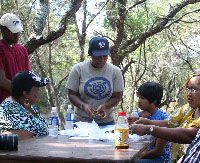 |
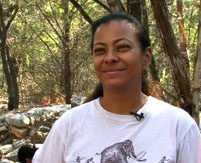
In this video, Dr. Maria Franklin discusses what it has meant to have African American students from her University of Texas archeology and black history classes working on an African American site. Video courtesy of the University of Texas Liberal Arts Instructional Technology Services (LAITS). |
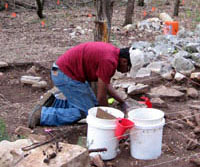 |
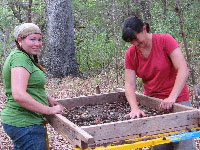 |
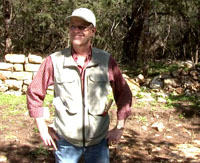
In this video, Principal Investigator Doug Boyd of Prewitt and Associates, Inc., discusses the layout of the farmstead and how Ransom Williams built structures and walls to work with the topography of the site.
Video courtesy of the University of Texas LAITS. |
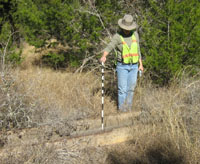 |
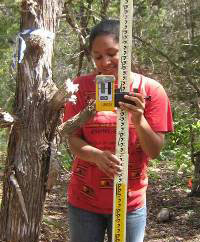 Archeologist Ishan Gordon holds a stadia rod with a moveable laser sensor to get an elevation reading on an artifact that has been found during excavation. A laser set up on a tripod nearby sends out a rotating laser beam, and the laser sensor detects that beam. The position of the sensor on the stadia rod then is used to calculate the elevation. |
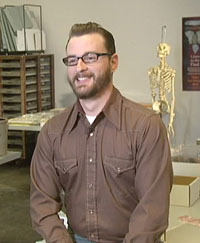
In this video, Project Archeologist Aaron Norment of Prewitt and Associates, Inc., discusses artifact distributions and site interpretation. Video courtesy of KLRU, Austin.  |
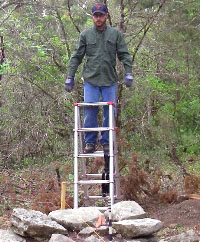 |
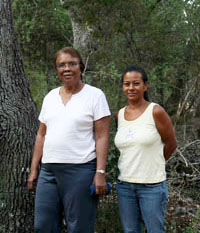 Jewel Andrews (left), one of Ransom and Sarah Williams’ great granddaughters, visited the Williams farmstead with Dr. Maria Franklin. Mrs. Andrews appreciated the opportunity to see first-hand what her ancestor’s farm looked like. In this photo, they are standing next to the giant oak tree near the yard of the Williams’ log cabin. |
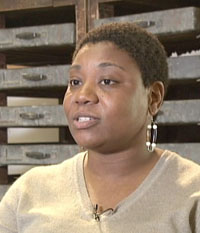
In this video, University of Texas archeologist Nedra Lee talks about the significance of finding artifacts related to education on the farmstead of a former slave. Video courtesy of KLRU, Austin.
|
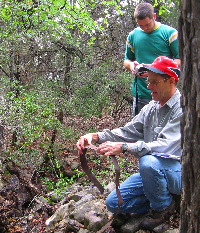 |
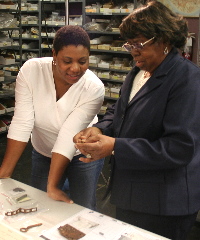 Archeologist Nedra Lee and Winnie (Harper) Moyer examine artifacts from the Williams farmstead in the Prewitt and Associates laboratory. A descendant of Antioch colony families, Mrs. Harper participated in oral history interviews for this project. Archeologist Nedra Lee and Winnie (Harper) Moyer examine artifacts from the Williams farmstead in the Prewitt and Associates laboratory. A descendant of Antioch colony families, Mrs. Harper participated in oral history interviews for this project. |
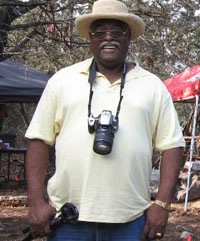 In this video, LeeDell Bunton, Sr., whose ancestors lived in Antioch Colony and likely were related to Ransom Williams, talks about what it meant to visit the site ("it's like being on hallowed ground)" and imagines what it must have been like for the Williams family. Video courtesy of the University of Texas LAITS.  |
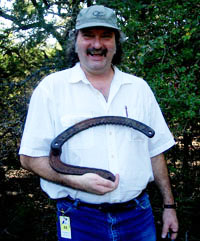 |
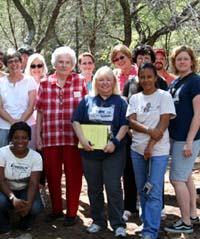 |
 |
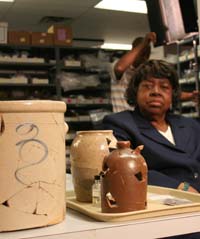 While visiting the Prewitt and Associates laboratory, Winnie (Harper) Moyer examines some reconstructed stoneware vessels from the Williams farmstead. Mrs. Moyer was born in 1937 and grew up in Antioch Colony, located about 4 miles from the Williams farmstead. She remembered using stoneware pottery much like these vessels. |